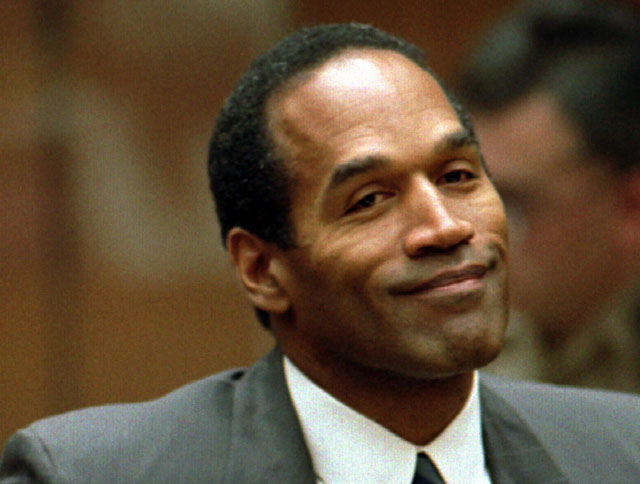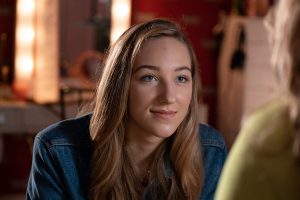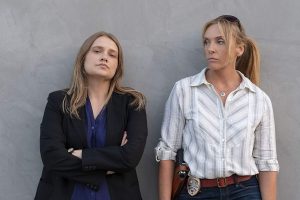30 years after “the trial of the century,” Netflix released American Manhunt: O.J. Simpson, a four-episode documentary diving into the criminal trial against the former professional football star. Despite there being several documentaries about Orenthal James (O.J.) Simpson and his life leading up to the trial, details about the double homicide in which his ex-wife, Nicole Brown Simpson, and Ron Goldman were murdered, remain generally unknown. Netflix’s docuseries aimed to fill in some of those gaps through interviews with people previously involved with the case and footage from the time of Simpson’s trial. Overall, it was captivating, but seeing interviewees continuously admit to knowing about disturbing things said and done by Simpson before and after the trial made it difficult to watch.
In June, 1994, the bodies of Nicole and Goldman were found stabbed to death at Simpsons’ home, with the murders quickly being linked to him after an investigation. However, other than Simpson calling for a limousine to take him to the airport with a duffel bag, there was little else about the events of that night that would make Simpson a clear suspect.
To provide a clearer picture of the events of that night, some of the first people interviewed in the docuseries were Jill Shively, resident of Santa Monica, and Skip Junis, husband of an American Airlines employee. Shively claimed to have seen Simpson run a red light that night of the murders and that he gave her a “mean look.” Junis maintained that he saw Simpson throw something in the trash can from a duffel bag at the Los Angeles International Airport (LAX) the night of the double homicide. The duffel bag was something that Brian “Kato” Kaelin, Simpson’s houseguest and a friend of the Simpsons, noticed that night as well, and he later testified in court that Simpson didn’t want anyone to touch that bag.
Shively and Junis were never called as witnesses in the trial.
Shively had sold her story, which the prosecution believed ruined her credibility, while Junis continuously waited to be called to trial by the prosecution but never was. There were clear gaps in the case left unexplained at the time.
Racial division between white and Black communities is a prevailing theme of the docuseries: many of the interviewees were against race being brought up during trial “because now we’re trying a race case. We’re not trying O.J. Simpson.” However, race can’t be overlooked in conversation, especially given the mistreatment of Black people and the fact that “race plays a part of everything in America,” as recognized by Johnnie Cochran, one of Simpon’s attorney, during the trial.
Four years prior to Simpson’s trial, Los Angeles Police Department (LAPD) officers severely beat Rodney King, an unarmed Black man, leaving him bloodied and bruised. The initial acquittal of these officers of all crimes incited nationwide protests for justice and accountability.
Many in the Black community saw Simpson’s trial as a way to avenge King’s injustice and hold LAPD responsible for the continuous mistreatment of Black people in Los Angeles; but, there wasn’t just one unanimous decision within the community, a concept well-highlighted in the documentary. A significant part of the docuseries was why many supported Simpson’s innocence, leading to city-wide celebrations from the Black community and resentment from the white community after the verdict was announced.
Another aspect of the role of race lies in the predominantly Black jury—this was believed by many to be an advantage, one Simpson was not unaware of. According to Carl E. Douglas, a member of the defense team and lawyer in Cochran’s civil rights firm, once Simpson saw the jury, he said, “Jeesh, if this jury convicts me maybe I did do it.”
Yolanda Crawford, one of the jurors of the criminal trial, objected to this speculation in the docuseries, claiming that race had nothing to do with the verdict reached. As she saw it, there was reasonable doubt that Simpson did not commit the murders—doubt created from contaminated DNA, a racist detective, and gloves that didn’t fit.
One of the prosecution’s arguments for motive was that Simpson allegedly abused Nicole, shown through photos of bruises on her face and body, but it was an ultimately ineffective attempt. The defense’s response was that Simpson was not on trial for domestic violence, but for murder. From that point forward, abuse was not a central argument, requiring the prosecution to turn to other measures of proving Simpson was guilty beyond a reasonable doubt.
Moreover, there was a focus on the actions of Black people like Christopher Darden, a Los Angeles county deputy district attorney and a member of the prosecution team, and Ron Shipp, former LAPD officer and longtime friend of Simpson, which were seen as a betrayal by the Black community.
Shipp testified against Simpson in the trial after Simpson told him inconsistent stories and wouldn’t take the lie detector test. According to Shipp, when Simpson was asked why he didn’t want to take the test, he said, “I’ve had dreams of killing her.” Following his testimony in court, Shipp said “there are people, Black people, that won’t speak to me.” Out of all of the interviewees, Shipp was one of the few with a moral compass—his action showed he cared more about what was right, rather than being liked by others. He knew the consequences of testifying and still followed through.
Shipp’s side of the story added a unique perspective of the Black community than what was typically shown during the time of the trial. Darden, on the other hand, was seen as the “token Black.” Yet, choosing him did not help the prosecution as much as they may have hoped; in fact, some believe he’s the reason they lost the trial.
A dramatic revelation of the docuseries revolved around the infamous photo of Simpson facing the jury and holding his hands up to show that the gloves recovered at the crime scene did not fit. During the trial, Darden—after taking many losses and having no luck with witnesses—had Simpson try on the gloves used during the crime. But, the gloves didn’t fit, hammering the nail in the coffin of the prosecution’s case.
Years later it is revealed by Mike Gilbert, Simpson’s sports agent, that the gloves didn’t fit for a different reason. Before the session, Gilbert told Simpson not to take his arthritis medication, causing his knuckles to swell up. That, in combination with the gloves possibly shrinking due to the exposure to blood and Simpson wearing latex gloves underneath, prevented Simpson from fitting the gloves all the way on and swayed the jurors closer to the not guilty verdict.
Gilbert also claimed that, post-trial, he admitted to Simpson his belief in his guilt. Simpson, according to Gilbert, said, “If Nicole wouldn’t have opened the door with a knife, she would still be alive.”
Out of all the interviewees, Gilbert arguably spent the most time with Simpson. Despite showing regret, his actions possibly contributed greatly to the murderer, allegedly Simpson, being set free. Gilbert admitted in the documentary that he knew of Simpson’s domestic abuse, but failed to help Nicole during that time. Gilbert’s participation in the docuseries demonstrated his desire for money over finding justice. It was disturbing being faced with his lack of conscience.
One piece of evidence could have saved the prosecution’s case: the DNA. Bill Thompson, a DNA specialist on the defense team, however, claimed that there was contamination of evidence and that the DNA recovered from the crime scene was not handled properly. This evolved into a case of planted evidence, which was easy to prove motive for when looking at one of the lead detectives on the case.
Mark Fuhrman, a detective sergeant for the LAPD, was one of the first people at the crime scene of the double homicide and had gathered the main evidence against Simpson, specifically the gloves. But, racist comments, including the use of the n-word, and other derogatory statements he made about Black people while serving in law enforcement created doubt that all the evidence was authentic.
When Fuhrman was asked about his racist comments in the docuseries, he failed to take full accountability for making the comments and committing perjury about them while on the stand during the trial. Fuhrman’s lack of accountability was disgusting to watch and his actions were detrimental to the prosecution’s case—his derogatory comments prevented the Brown and Goldman families from receiving justice.
Immediately following the announcement of the not guilty verdict, the Goldman family filed a civil suit against Simpson. In 1997, with a mostly white jury, Simpson was found liable for the murders and ordered to pay over $30 million.
Though the docuseries was informative and allowed viewers to hear the stories from people who were close to the case, it revealed a bigger issue in society: a lack of morality. Each episode of the docuseries featured someone new saying they knew of Simpson abusing his ex-wife. But, most of them never even offered to help her when she reached out for support; they just tried confronting Simpson but ultimately believed his side. It wasn’t until Simpson’s death in 2024 and the coinciding release of this docuseries that the truth of Simpson’s behavior came to light—an attempt to paint themselves as the good people that saw the wrongness in their actions. However, it may be too late.
American Manhunt: O.J. Simpson answers questions, but leaves the viewers asking for more. Was Simpson a good person who occasionally did bad things, or was he a bad person that occasionally did good things? Gilbert reflected near the end, but it was still not quite clear. However, what was certain is that Simpson was not the only one at fault—maybe it is time to hold everyone else accountable as well.





